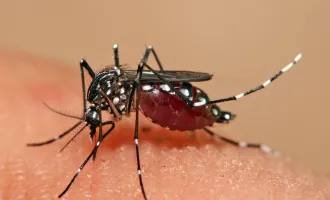Dr. Dan Lowenstein on diversity, research, and the evolution of UCSF: An interview with UCSF’s New Executive Vice Chancellor and Provost (EVCP)
Synapse: You’ve held a lot of positions here at UCSF from trainee to leadership. How has UCSF impacted you as you’ve moved through this range of positions?
I came here originally in 1983 as an intern and then the following year as a neurology resident. The first impact was having my clinical skills blossom under the tutelage of great mentors. The second was becoming a postdoctoral fellow working for Stan Prusiner at a very exciting time when the prion hypothesis was gaining significant momentum. The third was being given the opportunity to start up my own lab in epilepsy research as a junior faculty member. And then, as my research, teaching and clinical responsibilities matured, UCSF gave me the opportunity to became more involved in some of the larger efforts associated with the School of Medicine and the institution at-large.
Synapse: On the other side of the coin, how have you seen UCSF progress?
If we think about the three mission areas of UCSF (research, clinical care, and education), there’s no doubt that the research enterprise has continued to expand at a spectacular pace. We’ve entered into the true era of team science, and by virtually every metric, UCSF is at the cutting edge of biomedical discovery. In terms of clinical care, it’s been very impressive to see how the health system has applied systems science to improve the quality of care that patients receive. In terms of education - I can really only speak about the School of Medicine - it’s been incredibly exciting to see us go through major reforms in the curriculum and be recognized nationally for our ground-breaking innovations.
I’d say [one] of the challenges [has] been the partitioning of our campus. And that’s a challenge that we’re going to continue to face for the foreseeable future. And a second major challenge, and something that I’m particularly concerned about now as EVCP, is the cost of living in the bay area. The general trajectory of the cost of living in the bay area will continue for the foreseeable future, and I see it as probably the single greatest threat to UCSF. It affects every single member of our community.
Synapse: You’ve had a hand in many aspects at UCSF in patient care, research and teaching. How much of a role will you continue to have in these areas as you take on your new role as EVCP?
Part of the arrangement that I made with the chancellor was that as EVCP I will continue my work in epilepsy research. I’ll also maintain much of the teaching that I’ve been doing over the years, in particular the neuroscience course for medical students. The most difficult part of the decision to take on this new role has been the need to discontinue my clinical practice for at least the coming year.
Synapse: Can you tell me more about your research?
My work has been primarily in the genetics of human epilepsy. I’ll tell you briefly how we have just started the passage into the era of precision medicine. With many colleagues, we created a project in 2006 that was successful in enrolling more than 4000 people with specific forms of epilepsy. We collected detailed phenotypic information as well as DNA with the goal of doing whole exome and whole genome sequencing to try to discover the genes that contribute to certain forms of epilepsy.
The first major success was with a subgroup of the patients who have particularly severe forms of epilepsy that typically begin in early childhood. Our hypothesis was that these children had de novo mutations because their disorders were not inherited in a typical Mendelian fashion. By doing whole exome sequencing and comparing the sequences of the affected children and their normal parents, we were successful in identifying a number of causative mutations.
One particular mutation was in a potassium channel subunit named KCNT1. In vitro experiments demonstrated that, surprisingly, the drug quinidine was capable of reversing the dominant mutation effect. Shortly after and based on this finding, quinidine, which is an FDA-approved drug, was used in a child with a KCNT1 mutation and this led to a dramatic improvement in the patient’s epilepsy. The same result has now been observed in other children harboring KCNT1 mutations. I think this is just the beginning of the application of precise diagnostics and the discovery of personalized therapeutics for patients with epilepsy.
Synapse: Could you share some of your thoughts on the diversity initiatives at UCSF?
On one hand, I’ve seen this campus be a lead institution in terms of recognizing the vital importance of diversity, both in terms of social justice and the impact of a diverse workforce on the quality of healthcare and research. That being said, there’s still so much more to do in terms of creating an environment that fully upholds the principles of equal opportunity and inclusivity.
What I see – yet again – is the way our students can open our eyes to a better world. The most recent example, of course, is their white coats for black lives initiative that started last December, and captured the attention of the entire country. I know I speak for the chancellor when I say that the top leadership has taken notice, and is planning concrete steps that will increase our awareness of the centrality of diversity and inclusivity in our mission, and allow our community to become more reflective of the population of California.
Synapse: Where do you see UCSF going over the next 5, 10, 20 years?
Creativity is at the core of UCSF, and I am sure we will do everything we can to maintain this essence. As a public institution, we have a contract with society that, in exchange for resources we’re given by the taxpayers, we will do everything in our power to ensure that our understanding of the nature of health and disease, and our ability to heal, continue to improve as much as is humanly possible.
If you are interested in learning more about some of Dr. Lowenstein’s perspectives on our work at UCSF and life in general, you might like to see the “Last Lecture” which he delivered two years ago:


